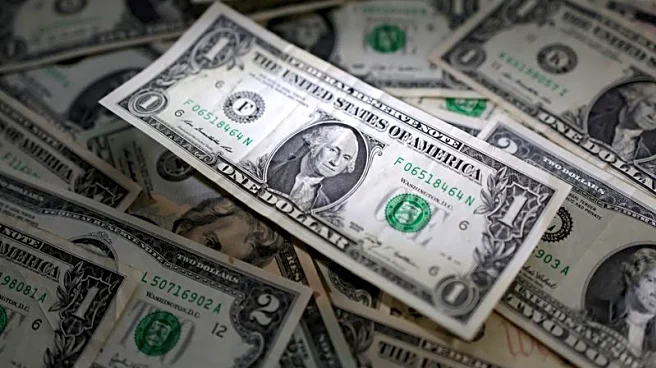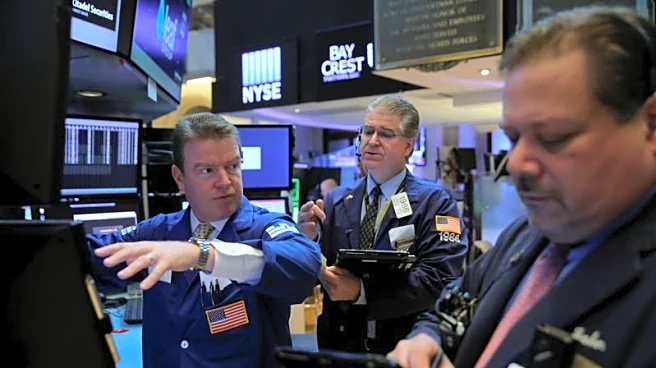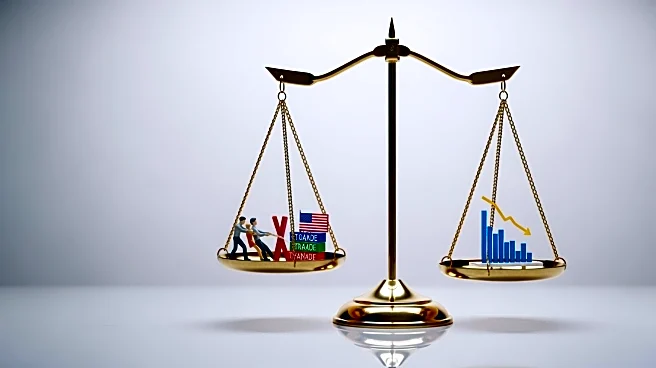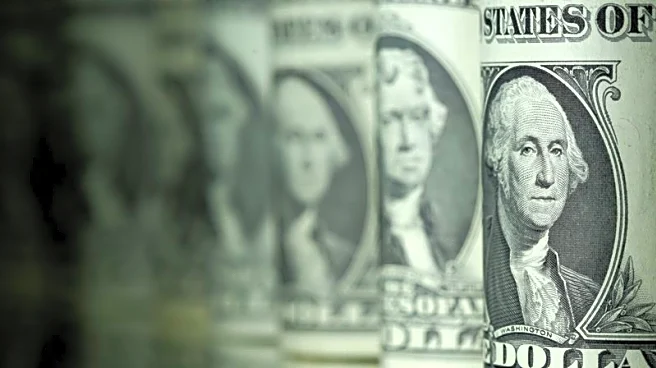What's Happening?
Federal Reserve Governor Christopher Waller has expressed support for another interest rate cut at the upcoming policy meeting, citing mixed readings on the job market. Stephen Miran, the Fed's newest
governor, is advocating for a more aggressive rate cut path for 2025. The U.S. dollar has weakened, experiencing losses against major currencies such as the euro, yen, and Swiss franc, amid ongoing U.S.-China trade tensions. The Fed's Beige Book has highlighted signs of economic weakness, including rising layoffs and reduced spending among middle and lower-income households. Additionally, U.S. Treasury yields are near multi-week lows, and the prolonged government shutdown is contributing to economic uncertainty.
Why It's Important?
The potential interest rate cuts by the Federal Reserve are significant as they could impact borrowing costs, consumer spending, and overall economic growth. The weakening of the U.S. dollar reflects investor concerns about trade tensions and economic stability, which could affect international trade and investment. The prolonged government shutdown further exacerbates economic uncertainty, potentially delaying key economic data releases and affecting government operations. These developments could influence market sentiment and the strategic decisions of businesses and policymakers.
What's Next?
The Federal Reserve's upcoming policy meeting will be closely watched for decisions on interest rate cuts. The ongoing U.S.-China trade tensions and government shutdown are likely to continue influencing market dynamics. Stakeholders, including businesses and investors, will need to navigate these uncertainties and adjust their strategies accordingly. The meeting between President Trump and Chinese President Xi Jinping may also play a crucial role in shaping future trade relations.
Beyond the Headlines
The economic uncertainty and potential rate cuts raise questions about the long-term implications for monetary policy and financial stability. The Fed's actions could set precedents for future economic interventions, influencing how central banks respond to economic challenges. Additionally, the trade tensions highlight the complexities of global economic interdependence and the need for diplomatic solutions.












